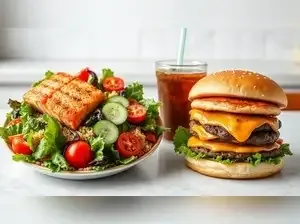The American Heart Association (AHA) issued its latest scientific advisory in the journal Circulation, just days prior the launch of the second “Make America Healthy Again” (MAHA) Commission report, led by U.S. Health and Human Services Secretary Robert F. Kennedy Jr.
The initial MAHA report, issued in May, linked ultraprocessed foods to the evolving prevalence of chronic illness in children. The forthcoming installment is anticipated to outline policy alterations focused at addressing these concerns.
Ultraprocessed Foods Under Scrutiny
According to the AHA, the key message is clear: most ultraprocessed foods are dangerous to overall wellness and heart health, and both manufacturers and regulators are required to assume the responsibility for limiting the production and sale.However, the advisory also examines a continuing debate, about whether all UPFs are equally unhealthy and the answer, it seems, is more subtle.
“Maybe not,” the report cites. In fact, it finds a few possibilities of healthier choices such as “certain whole grain breads, low-sugar yogurts, tomato sauces, and nut or bean-based spreads.” Still, the organization highlights that even these food items should be monitored carefully to ensure they preserve nutritional integrity.
Expert Voices Weigh In
“That’s no reason to celebrate,” cited Christopher Gardner, vice chair of the AHA report’s writing group.“Let’s not give the industry a write-off just because there’s a few things that are a bit healthier than the vast majority of ultraprocessed foods full of sugar, salt and fat,” he stated.
Gardner, who also serves as the Rehnborg Farquhar Professor of Medicine at Stanford University, cautioned:
“We have tons of evidence that too much salt, sugar and fat are harmful — we’ve known that since the days of junk food,” he added. “But today’s junk food is ultraprocessed with cosmetic additives that lead to overeating and tons of health issues. That’s the problem. Can we please double down on those?”
Mounting Health Concerns
The guidance comes at a significant time. The U.S. Centers for Disease Control and Prevention (CDC) reported recently that Americans aged 1 and older get almost 55% of their daily calories from ultraprocessed foods, a figure that climbs to 62% for children.This trend is concerning, as proofs show a dose-response connection between UPF consumption and major health concerns that includes heart disease, stroke, type 2 diabetes, obesity, and early death.
A February 2024 analysis of 45 meta-studies spanning almost 10 million people disclosed that just one additional serving of ultraprocessed food every day could increase the risk of cardiovascular-related death by 50%. It also connected UPF intake to a 55% greater obesity risk, 41% more likelihood of sleep disorders, 40% elevations in type 2 diabetes, and 20% increase in depression risk.
What the AHA Recommends
To combat these results, the AHA recommends Americans to limit the most dangerous ultraprocessed foods, mainly those high in unhealthy fats, added sugars, and sodium. However, it enables for “a small number of select, affordable UPFs of better diet quality” as part of an overall balanced diet.Differing Opinions
Not everyone agrees with this moderate approach. Marion Nestle, professor emerita of nutrition, food studies, and public health at New York University, showed disappointment:“The emphasis on ‘healthy’ UPFs is not helpful for two reasons,” Nestle cited in an email. “The small number of foods in that category (of healthy UPFs), and the recent research demonstrating that even ‘healthy’ UPFs induce people to eat more calories than they would if they were eating minimally processed foods.”
Nestle referred to a latest U.K. study featuring participants who lost twice as much weight when eating home-cooked food items compared to those intaking store-bought “healthy” ultraprocessed foods.
How Foods Were Categorized
The AHA classified foods into three categories: healthy, moderately healthy, and unhealthy.- Healthy choices: fresh or frozen fruits and vegetables without added salt or sugar, whole grains, unsalted nuts and seeds, beans and legumes, lean unprocessed meat, low-fat dairy, and unsweetened drinks.
- Moderately healthy foods: white rice, full-fat dairy, lightly salted nuts, canned fruits in light syrup, low-fat soups, and store-bought meals utilizing healthy ingredients.
- Unhealthy foods: processed meats, high-fat red meats, butter, tropical oils, sweetened snacks, fried foods, refined grains, instant noodles, sugary drinks, and desserts.
Disclaimer: This article is intended for informational and educational purposes only. It does not act as a substitute for medical advice, diagnosis, or treatment. Consult healthcare experts before making significant dietary or lifestyle alterations.
FAQs:
1. What are ultraprocessed foods?Ultraprocessed foods are industrially made items high in added sugars, salt, and fats.
2. What did the American Heart Association recently release?
The AHA issued fresh guidelines on the intake of ultraprocessed food items.





